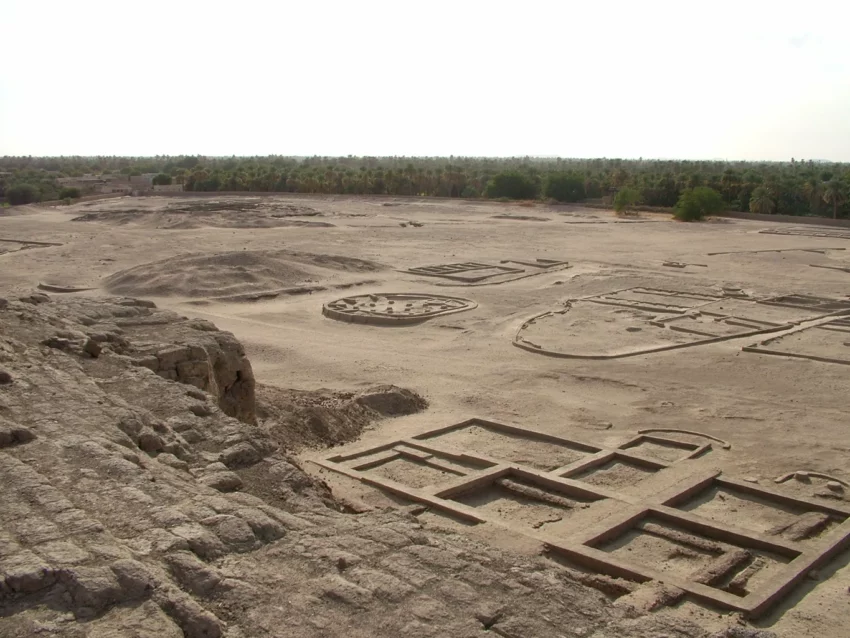The Archaeological Significance of Kerma: An Ancient Nubian Capital
Kerma, located in present-day Sudan, stands as a testament to the rich cultural and historical legacy of ancient Nubia. This site, one of the largest archaeological sites in ancient Nubia, has been the focus of extensive excavations and research for decades, revealing a complex society that thrived over 5,500 years ago.
Get your dose of History via Email
Historical Overview
The area that Kerma occupies was initially settled by hunter-gatherers around 8350 BC, during the Mesolithic period. However, it experienced periods of abandonment, likely due to environmental changes affecting the Nile’s flow. By around 3000 BC, the advent of agriculture marked the beginning of a cultural tradition in Kerma, leading to the development of a large urban center centered around the Western Deffufa, a significant adobe temple. Between 2550 BC and 1550 BC, a state society emerged, with evidence suggesting a shift away from cattle breeding around 1750 BC and the appearance of copper metallurgy between 2200-2000 BC.
Settlement Periods
Kerma’s history can be divided into several phases, from the Pre-Kerma period (circa 3500–2500 BC) to the Late Kerma – ‘New Kingdom’ period (circa 1500–1100? BC). Each phase reflects changes in the culture, social structure, and interactions with neighboring regions, particularly ancient Egypt.
Kerma and Its Artifacts
By 1700 BC, Kerma had grown to accommodate at least 10,000 inhabitants. The artifacts found in Kerma, distinct from those of ancient Egypt, include extensive amounts of blue faience developed independently by the Kermans, glazed quartzite, and architectural inlays, showcasing a unique artistic and technological culture.
Kerma’s Cemetery and Royal Tombs
The cemetery at Kerma, containing over 30,000 graves, illustrates a clear social stratification within the society. The presence of large burial mounds for the city’s final kings, some adorned with motifs of Egyptian deities, indicates the complex interplay of cultural influences and the prominence of Kerma as a royal burial site.
Archaeological Excavations
The early 20th-century excavations led by George A. Reisner laid the groundwork for understanding Kerma’s culture and chronology. However, it was not until the late 20th century and onwards that excavations by Charles Bonnet and others revealed Kerma as a vast, independent urban complex, challenging previous notions of Kerma as a satellite city of ancient Egypt.
Bioarchaeology
Bioarchaeological studies at Kerma have provided insights into mortuary practices, health, and social structure. Analysis of skeletal remains has questioned earlier assumptions about sacrificial victims, suggesting a need for a nuanced understanding of Kerma’s society. Furthermore, anthropological studies, including those by S.O.Y. Keita, have explored the affinities between the populations of Kerma and other regions in the Nile Valley, contributing to our understanding of population dynamics in ancient Nubia.
Conclusion
Kerma’s archaeological site offers a window into the complex society that once thrived in ancient Nubia. Through decades of excavation and research, scholars have uncovered the layers of Kerma’s history, from its early settlement to its development into a significant urban and cultural center. The artifacts, burial practices, and bioarchaeological studies from Kerma not only highlight the uniqueness of the Kerma culture but also its interactions and connections with neighboring civilizations, particularly ancient Egypt. As excavations and research continue, the story of Kerma will undoubtedly provide further insights into the rich tapestry of human history in the Nile Valley.

